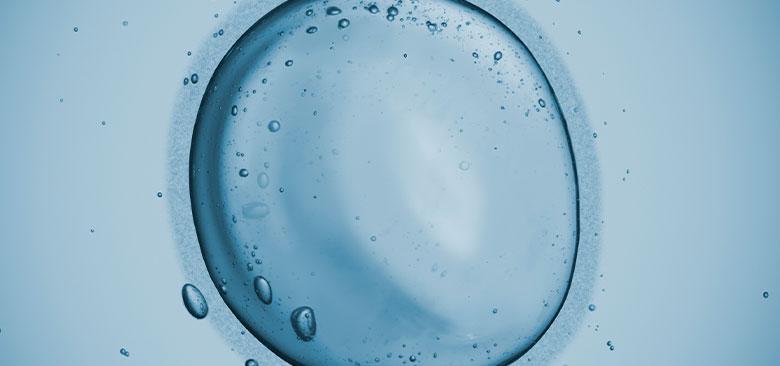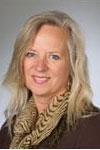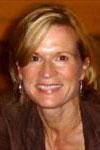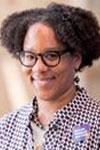
Despite the popularity of egg donation, the long-term health outcomes of egg donors are largely unknown. UCSF School of Nursing researchers are launching a pilot project that could provide prospective donors with more information. (Photo credit: iStock)
Uncovering the Long-Term Health Outcomes for Egg Donors
Egg donation has been in practice for over 30 years and has helped thousands of families have children. Yet, significant health aspects about egg donation are still a mystery.
For this reason, Diane Tober, an assistant professor at the UCSF School of Nursing, has launched a series of investigations related to egg donation and freezing. She started the parent study, The OVADO Project, in 2015, and now has almost 500 egg donor participants from around the world—many of whom she’s been following for several years.
“We really have very little information about risks and benefits of egg donation, or on donor’s decisions and experiences in the short term or over time,” Tober said. “We don’t really know if there is a causal connection between undergoing controlled ovarian stimulation and deleterious outcomes, but if we can start to collect that data and track people over time, we Diane Tober can begin to get a better idea."
Diane Tober can begin to get a better idea."
Tober and her colleagues Monica McLemore and Kimberly Baltzell are launching a new pilot project that aims to compare the decisions and experiences of women who freeze or donate eggs. The project could give anyone considering undergoing controlled ovarian stimulation more information about the potential impact on their health and well being, and improve informed consent.
“As a medical anthropologist, I also think it’s important to understand how the egg donation process may operate differently in different cultural settings, as well as to draw comparisons between different groups of people who undergo the same process but for different purposes. So, I’ve been looking at this issue from numerous vantage points.”
Unknown Health Risks
People who choose to donate or freeze their eggs endure a weeks-long regimen of hormones and medications to increase egg production, a process known as controlled ovarian stimulation. The lasting effects of this regimen are unclear, due to lack of longitudinal studies specifically on egg donors. Yet Tober said potential donors are often told that health risks are less than 1 percent.
Without research to prove if the hormonal therapy is harmful, anecdotal evidence of otherwise healthy young women developing cancer has become magnified. Baltzell, an associate adjunct professor, has studied cancer risk among young women and is intrigued by what the pilot study will uncover.
“There is so much study and publicity around hormonal replacement therapy and menopausal women and cancer risk, it seemed interesting to me to look at what happens to pre-menopausal women with basically a bolus of hormones, which is what’s required to stimulate egg production,” Baltzell said.
New Project Aims to Understand Health Consequences, Decision Making
The one-year pilot project received funding in January from the UCSF National Center of Excellence in Women’s Health. The researchers are recruiting 20 to 50 women who have frozen their eggs and 20 women who have donated eggs. They are targeting women of reproductive age—in their 20s to early 40s—and aspire for an ethnically diverse pool of participants, as well as non-binary or gender non-conforming people with ovaries. Tober said she will be primarily recruiting from Bay Area clinics, but is accepting women from anywhere in the U.S. They hope to begin conducting surveys and interviews in April.
Baltzell cautions that, because of the lack of data, researchers need to keep an open mind about the link between the hormonal therapy involved in ovarian stimulation and potential harmful outcomes like cancer. But she is also uncertain that the fertility industry’s market structure is beneficial for all women.
 Kimberly Baltzell “Fertility clinics’ success rates are based on pregnancies, which may translate to the availability of more eggs,” Baltzell said. “I don’t know how you would de-incentivize a clinic to not have that be their standard of success. The standard of success should be women’s health.”
Kimberly Baltzell “Fertility clinics’ success rates are based on pregnancies, which may translate to the availability of more eggs,” Baltzell said. “I don’t know how you would de-incentivize a clinic to not have that be their standard of success. The standard of success should be women’s health.”
Tober echoes this concern. The American Society for Reproductive Medicine recommends no more than six donation cycles in a woman’s life, Tober said. Yet she has come across a few donors who have undergone as many as 17 to 19 cycles, and many who have exceeded the ASRM guidelines beyond seven cycles and still plan to undergo more.
“The amount of money donors are paid can be a huge motivator,” Tober said. “I think we need to come up with ways to better track donor cycles in order to avoid donors going beyond ASRM recommendations.”
She’s also encountered women who have been stimulated to produce upwards of 80 eggs in a single donation cycle, when 10 to 20 eggs per cycle is the recommended target range. “Do higher egg counts lead to risk for higher complications?” Tober asked. “We don’t know.”
“We also don’t know if there’s a difference between egg donors and egg freezers, in terms of their decisions, experiences, and feelings of being cared for as patients, or how different people experience and think about their eggs and fertility at different stages of the life course. Our research will help us understand what best practices might look like and be encouraged. This information can help improve satisfaction and informed consent of individuals who undergo this process for any purpose, and can be enormously beneficial to both clinical practice and to patients.”
Infertility and Reproductive Justice
The pilot research will also investigate socioeconomic factors that may influence whether a woman donates or freezes her eggs, as well as the access – or lack thereof – the fertility industry offers some populations. Who has the access and opportunity to use the fertility marketplace is important to consider, said McLemore, associate professor and co-principal investigator.
“Access to infertility treatment is a reproductive justice issue,” McLemore said. “It is also a complex and vexing issue that fascinates me. For people who cannot conceive children, it is  Monica McLemore frustrating to see the barriers they face to a basic human function – becoming a parent.”
Monica McLemore frustrating to see the barriers they face to a basic human function – becoming a parent.”
Women can spend up to $40,000 to freeze their eggs. That financial commitment is more burdensome for black and Latinx women, who earn roughly 28 percent less per hour than Asian and white women. On the donor side, the demand for eggs from Latinx, black and non-Jewish women is low while Asian women can earn up to $20,000 or more for their eggs. This disparity “reflects current attitudes in society about whose reproduction is perceived to be valuable and whose is not,” McLemore said.
White women use fertility services about twice as much as black or LatinX women. The disproportion is more disheartening considering the rate of infertility among black women is higher than white women.
“The idea that some people will have the opportunity to parent and others not due to poverty is something we need to deeply interrogate,” McLemore said. “I hope the data from this study can shine a light on what is really the underlying experience of egg donation and egg freezing, but also identify ways to consider how a human rights and reproductive justice approach could allow for broader public thinking about these issues.
“Without equitable access to all options, we don’t have opportunities to support human rights in health care,” she said.



